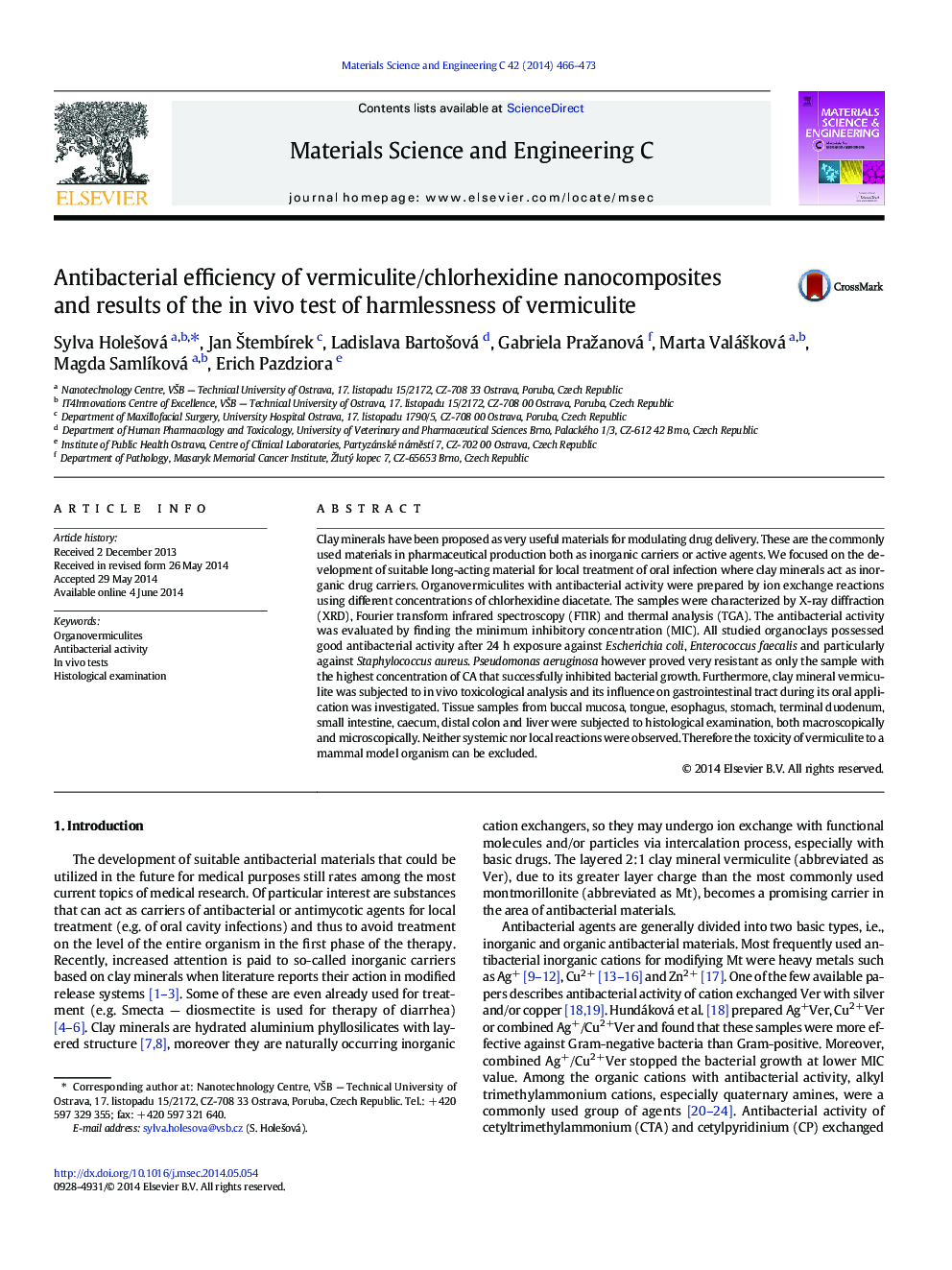| کد مقاله | کد نشریه | سال انتشار | مقاله انگلیسی | نسخه تمام متن |
|---|---|---|---|---|
| 1428659 | 1509179 | 2014 | 8 صفحه PDF | دانلود رایگان |
• Antibacterial chlorhexidine diacetate/vermiculite nanocomposites were prepared.
• Samples were characterized by XRD, FTIR and TGA.
• Efficiency against S. aureus, E. faecalis, E. coli and P. aeruginosa was evaluated.
• Influence of Ver on gastrointestinal tract during oral application was investigated.
• In vivo toxicological analysis excluded neither systemic nor local reactions.
Clay minerals have been proposed as very useful materials for modulating drug delivery. These are the commonly used materials in pharmaceutical production both as inorganic carriers or active agents. We focused on the development of suitable long-acting material for local treatment of oral infection where clay minerals act as inorganic drug carriers. Organovermiculites with antibacterial activity were prepared by ion exchange reactions using different concentrations of chlorhexidine diacetate. The samples were characterized by X-ray diffraction (XRD), Fourier transform infrared spectroscopy (FTIR) and thermal analysis (TGA). The antibacterial activity was evaluated by finding the minimum inhibitory concentration (MIC). All studied organoclays possessed good antibacterial activity after 24 h exposure against Escherichia coli, Enterococcus faecalis and particularly against Staphylococcus aureus. Pseudomonas aeruginosa however proved very resistant as only the sample with the highest concentration of CA that successfully inhibited bacterial growth. Furthermore, clay mineral vermiculite was subjected to in vivo toxicological analysis and its influence on gastrointestinal tract during its oral application was investigated. Tissue samples from buccal mucosa, tongue, esophagus, stomach, terminal duodenum, small intestine, caecum, distal colon and liver were subjected to histological examination, both macroscopically and microscopically. Neither systemic nor local reactions were observed. Therefore the toxicity of vermiculite to a mammal model organism can be excluded.
Figure optionsDownload as PowerPoint slide
Journal: Materials Science and Engineering: C - Volume 42, 1 September 2014, Pages 466–473
